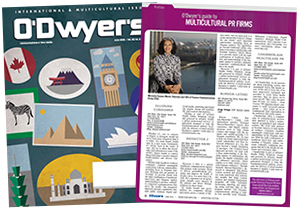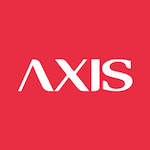|
Jorge Ortega |
When I first began in the Hispanic communications field, more than 25 years ago, Hispanics were considered a niche market, and targeting them was far less sophisticated and complex than it is in 2016. Today, the Hispanic market has burgeoned into a large, diverse audience that has a significant impact on companies’ bottom lines, demanding much more from communications professionals than in years past.
|
|
Be it content, channels for engagement, or community connections, in this increasingly digital world, and with Hispanics over-indexing on digital channels and devices, today’s Hispanic marketer has to employ a much broader depth and breadth of assets than days past to communicate effectively with this audience. Now, more than ever, brands need to connect with Hispanics, which means communications agencies must have capabilities far beyond a well-connected, bilingual media relations team.
English? ¿Español?
Speaking of bilingual media relations, this is not to say that bilingual media specialists aren’t essential to our agencies any longer. They are. However, the way our strategic communications plans approach traditional media relations has become much more complex. English or Spanish? Or do we shake things up with Spanglish content? There’s a multitude of studies circulating on the benefits of Spanish verses English to connect with different Hispanic generational levels, but that’s not to mention the young, powerful Millennial generation. Good luck with them, fellow marketers.
A difficult audience to categorize, Hispanic Millennials demand much more from marketers, and are hyper-connected to online media. While many of them speak Spanish as their first language, they may be equally strong in English and prefer to communicate in their Anglo tongue. Buzzfeed and Elite Daily may reach these audiences just as effectively in English, while Telemundo and Univision are now scrambling to better connect with the trendy Millennial population.
Digital is spelled the same in Spanish
Arguably the best means of reaching Hispanics digitally is, by its interactive nature, more demanding of marketers. Latinos are now famous for their penchant for digital media, over-indexing on digital usage. Nielsen recently found that Hispanic consumers in the U.S. tend to stream more online video and were more likely to use mobile devices as second screens. This is not breaking news to Hispanic marketers, however it does increase what is asked of brands. Across segments, brands are expected to interact with their audiences, not just market to them.
Brands need to create engaging videos and content, and with public relations budgets significantly smaller than those for general market clients, they need an affordable way to create fast, creative content that will resonate with their audience across social media channels. Agencies must be able to provide this now, and even more so in the future. This could change the way that a traditional public relations agency is structured.
Creating engaging content requires a talented creative team, and speedy graphic designers and video editors who can work hand-in-hand with a communications team to generate content quickly, that is in line with the brand’s messaging and will cause digital Hispanic audiences to take note, rather than continue scrolling down their newsfeeds.
My comunidad
Scan through any trending Hispanic influencer’s account, and you’re bound to come across a meme related to having a large, extended Latino family. It’s no secret that Hispanics place great emphasis on the value of family and community relationships. However, this builds expectations for brands to integrate seamlessly into the Hispanic culture. Think a Cinco de Mayo sponsorship at a local Mexican restaurant is enough? Think again.
While some brands are leading the pack at infusing their brand narrative with Latino values, this requires more of a strategic communications campaigns than a presence at large, must-have events. The U.S. Hispanic population is a powerful network, reflected in the strength and influence of its organizations. Strong relationships with Hispanics begin with strong relationships with appropriate organizations within this network. Would you like to connect with young, business-minded Hispanics? Connect with ALPFA, the Association for Latino Professionals. Does your brand support entrepreneurship and small and medium-sized businesses? Maybe you should connect with the Stanford Latino Entrepreneur Initiative. Want to understand where Latino voters stand on certain issues? You can meet Latino appointed and elected officials through NALEO (National Association of Latino Elected and Appointed Officials). A successful Hispanic communications agency needs to have the connections to get your brand’s foot in the door across a variety of organizations and chambers.
Are you ready to succeed in this market?
As the entire public relations industry continues to evolve with the advance of digital media, Hispanic-facing efforts are changing even more quickly. Agencies specializing in the U.S. Hispanic market must now provide more capabilities for their clients, which requires a significant change in traditional public relations approaches.
Brands needs to connect with audiences through engaging, multilingual content shared across digital channels, and interact meaningfully with the community in order to deliver measurable business impact. Hispanic marketers must strengthen and diversify their communications capabilities in order to rise to this challenge.
* * *
Jorge Ortega is executive VP at Burson-Marsteller, and leader of Burson Latino.




 Jackeline Stewart-Hawkins has joined BCW as executive VP and leader of its polycultural consulting unit.
Jackeline Stewart-Hawkins has joined BCW as executive VP and leader of its polycultural consulting unit. Gen Z Latinos are on their way to becoming the main engine of population and economic change in the U.S. within the next decade. Communicators are taking notice.
Gen Z Latinos are on their way to becoming the main engine of population and economic change in the U.S. within the next decade. Communicators are taking notice. The Axis Agency, which launched in 2005 as Weber Shandwick’s multicultural marketing unit, is now an independent and minority-owned shop as CEO Armando Azarloza and COO Carmen Lawrence have acquired the brand from Interpublic.
The Axis Agency, which launched in 2005 as Weber Shandwick’s multicultural marketing unit, is now an independent and minority-owned shop as CEO Armando Azarloza and COO Carmen Lawrence have acquired the brand from Interpublic. Multicultural audiences account for almost 40 percent of the U.S. population, yet multicultural media buys made up only about five percent of the total ad and marketing revenues in the U.S. last year, according to a report.
Multicultural audiences account for almost 40 percent of the U.S. population, yet multicultural media buys made up only about five percent of the total ad and marketing revenues in the U.S. last year, according to a report. Horizon Media and hip-hop artist Pitbull have joined forces to start a marketing agency aimed at the multicultural market.
Horizon Media and hip-hop artist Pitbull have joined forces to start a marketing agency aimed at the multicultural market.


 Have a comment? Send it to
Have a comment? Send it to 
No comments have been submitted for this story yet.